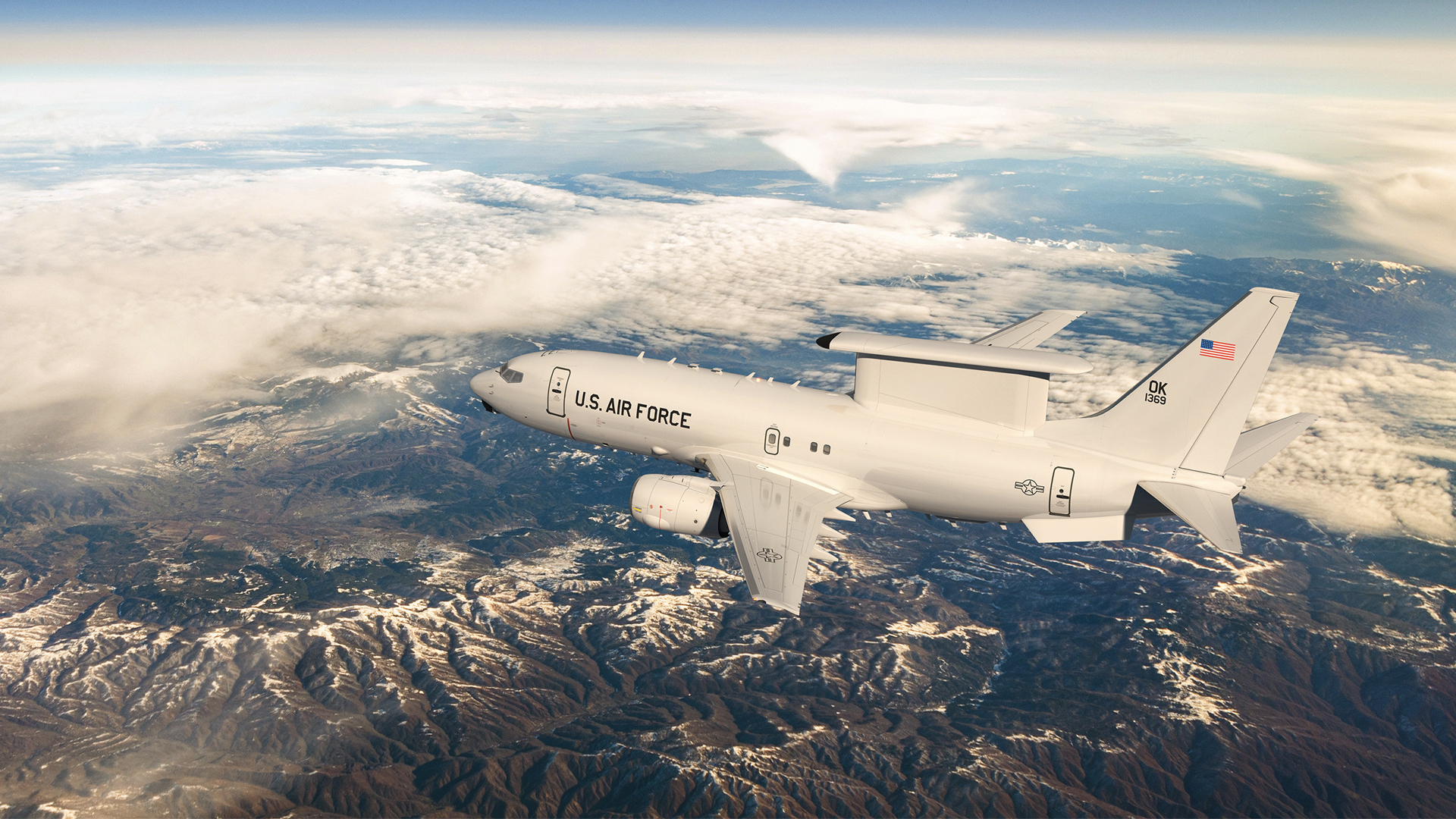

The jet which the U.S. Air Force will soon use to coordinate air battles has already earned its stripes helping the Royal Australian Air Force fight the Islamic State.
The E-7A Wedgetail, which is based on the Boeing Next Generation 737-700 commercial jet, is an airborne early warning and control aircraft, meaning it has a large multi-role electronically scanned array radar mounted to the fuselage which helps the crew see hundreds of miles in all directions. The crew uses that radar to spot and track targets, keep friendly aircraft from running into each other and build a picture of the battlespace that commanders can then use to understand what is happening.
On Tuesday, the U.S. Air Force awarded Boeing a contract of $1.2 billion to start working on a prototype E-7, with the first Air Force version of the aircraft expected to be fielded by 2027.
Though 2027 may mark the Wedgetail’s first year in U.S. service, the Australian air force has flown the jet since 2009. The Aussies have six of the aircraft, at least one of which helped take the fight to ISIS over Iraq and Syria starting in October 2014.

Though vulnerable early warning and control aircraft like the E-7 generally stay away from the shooting wherever possible, the information that the Australian Wedgetails provided no doubt helped coalition strike aircraft put ordnance onto ISIS targets during the campaign.
Fighter crews “need that information that we provide to be able to execute the mission,” one unnamed RAAF E-7 crew member told 60 Minutes Australia in a 2015 episode about Australia’s air campaign against ISIS. “We’re that central communications node.”
RAAF Group Capt. Stuart Bellingham expressed a similar opinion. “The E-7A Wedgetail is now a combat-proven capability,” he told Boeing in a 2016 press release. “It continues to excel on operations as a key element of the coalition’s air battle plan in the fight against [ISIS].”
Subscribe to Task & Purpose Today. Get the latest military news, entertainment, and gear in your inbox daily.
Early warning and control play a vital role in most air campaigns, which is part of why the E-7 often flew more than 12 hours at a time to support the counter-ISIS fight. In 2015, the aircraft flew continuously for 17 hours with the help of mid-air refueling.
The E-7’s good performance is good news for the U.S. Air Force, whose leaders say the service is in urgent need of replacing its fleet of E-3 Sentry Airborne Warning and Control System aircraft which has been in use since the 1970s. The E-3 is based on the Boeing 707, a jet that last flew civilian passengers for a U.S. airliner in 1983.
“There’s a reason why zero, exactly zero, airlines on the planet operate the 707,” Gen. Mark Kelly, the head of Air Combat Command, said about the jet in 2021. Specifically the “challenges of sustaining a 707 with TF33 engines.”
TF33 engines, like the 707 itself, are very old. The engine and the aircraft were first flown in 1959 and 1957, respectively, though the aircraft did not fly as an Air Force AWACS platform until 1975.
“It just really really takes miracle workers from airmen first class in the flightline to backshops in depot at Tinker [Air Force Base] to keep these airplanes in the air,” the general said.

Unlike the Boeing 707, the 737 on which the Wedgetail is based is still in production, so the spare parts supply is far more robust. In fact, the Air Force already uses a version of the 737 as a transport aircraft, while the Navy uses a version as a logistics aircraft.
The Air Force has had its eye on the E-7 for some time now. In April, the service announced it would replace a portion of its E-3 fleet with the E-7 and that a contract award was planned for fiscal year 2023.
Now that the contract announcement has dropped, the Air Force says that it wants to procure a total of 26 Wedgetails by fiscal year 2032.
“This contract award is a critical step in ensuring that the department continues delivering battlespace awareness and management capabilities to U.S. warfighters, allies, and partners for the next several decades,” Andrew Hunter, the assistant secretary of the Air Force for Acquisition, Technology, and Logistics, said in the contract announcement.
“The E-7A will enable greater airborne battlespace awareness through its precise, real-time air picture and will be able to control and direct individual aircraft under a wide range of environmental and operational conditions,” he added.
The latest on Task & Purpose
- A US Army M1 Abrams tank named ‘ASVAB Waiver’ is keeping watch over Europe
- The Baba Yaga returns: Keanu Reeves is back as John Wick, possible Marine vet
- A U-2 spy plane pilot took a selfie with the Chinese spy balloon
- How the Air Force flew its longest-distance night hostage rescue
- How Green Beret Paris Davis’ teammates fought the Pentagon for his Medal of Honor
Want to write for Task & Purpose? Click here.